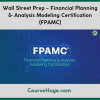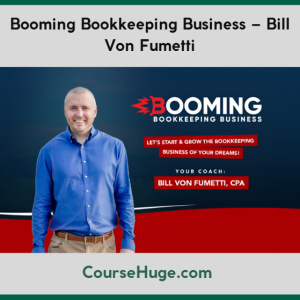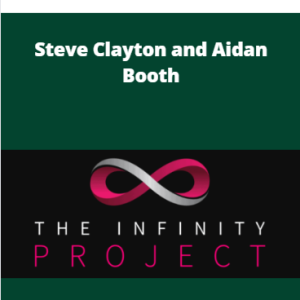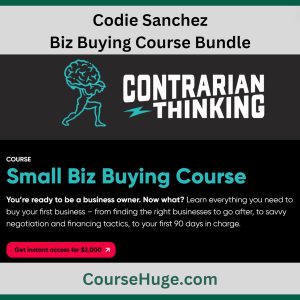The Ecom Wolf Pack – Dropshipping To Branding Course
$497.00 Original price was: $497.00.$13.00Current price is: $13.00.
Lara Rahib Dropshipping To Branding Course [Instant Download]

1️⃣. What is Lara Rahib Dropshipping To Branding Course?
The Ecom Wolf Pack Dropshipping To Branding Course is an ecommerce training program that shows you how to build profitable online stores from scratch to 7-figures.
Lara Rahib teaches you her proven system for finding winning products, setting up conversion-optimized Shopify stores, and scaling with three powerful ad platforms: Facebook, Pinterest, and Google.
The course guides you through the complete journey from starting with dropshipping to creating your own branded products, helping you build a lasting online business with predictable monthly profits.
📚 PROOF OF COURSE



2️⃣. What you’ll learn in Dropshipping To Branding Course:
The Ecom Wolf Pack gives you everything you need to build, improve and grow your online store profitably. Here’s what you’ll learn:
- Store optimization tricks to turn visitors into buyers with better website design
- 7-figure ad strategies for Facebook, Pinterest, and Google to bring shoppers to your store
- Product research methods to find winning products that sell well
- Scaling systems to grow from dropshipping into building your own brand
- Profit maximization using retargeting, email marketing, and getting more value from customers
- Business automation to create an online store that runs smoothly and supports your lifestyle
When you finish this course, you’ll know exactly how to create steady sales and grow your store to 7-figures.
3️⃣. Dropshipping To Branding Course Curriculum:
✅ Module 1: Welcome to The Ecom Wolf Pack
This introductory module establishes the foundational mindset needed for e-commerce success. It begins with a personal message from the instructor and explores critical psychological aspects of entrepreneurship, including why most people fail in this business and how to develop the right mental approach.
✅ Module 2: Shopify Basics & Product Research
This module teaches essential product research techniques across different advertising platforms. Students learn to identify winning products for Facebook, Pinterest, and Google Shopping, understand the differences between social media and search engine advertising, and explore supplier relationships including dropshipping agents in China.
The module also covers fundamental decisions like choosing between general or niche stores and practical Shopify setup steps including store naming, logo creation, and trademark considerations.
✅ Module 3: Setting Up Your Shopify Store
This section walks students through the technical aspects of building a professional Shopify store. Key lessons include selecting the right theme, configuring store settings for optimal functionality, creating collections and pages, and setting up navigation menus.
Students also receive templates for essential store pages like FAQs, About Us, and Shipping Policies to establish credibility and trust with customers.
✅ Module 4: Product Importing
Students learn efficient methods for populating their store with products. The module covers both automated importing using Oberlo and manual product addition, with special attention to strategic pricing methodologies that maintain profitability while remaining competitive.
✅ Module 5: Product Descriptions
This focused module teaches students how to craft compelling product descriptions that convert browsers into buyers. It provides templates and examples of effective product descriptions while explaining how to optimize the entire product page design for maximum conversion rates.
✅ Module 6: Apps You Need & Why
This comprehensive module introduces essential Shopify apps that enhance store functionality and profitability. It covers customer experience apps like currency converters and review systems, marketing tools including SMS and email solutions, and operational apps for tracking, taxes, and profit monitoring.
A standout resource is the Business-Tracker Wolf Pack spreadsheet for financial management alongside instruction on using OrderMetrics for profit tracking.
✅ Module 7: Introduction To Facebook Ads
This module lays the groundwork for Facebook advertising success. Students learn to properly set up Business Manager, create ad accounts, implement pixel tracking, and understand Facebook’s advertising structure including the differences between ABO and CBO campaigns.
Advanced topics include API tracking event setup and managing Facebook feedback scores to maintain account health.
✅ Module 8: Preparing To Launch Your Ads
Students learn the pre-launch processes necessary for successful ad campaigns. The module covers audience research, video creative preparation, effective ad copy writing, and campaign setup in Facebook’s platform.
The module emphasizes proper tracking setup and understanding key performance indicators, concluding with a comprehensive pre-launch checklist to ensure campaigns are properly configured.
✅ Module 9: Fulfilling Orders
This concise but critical module teaches the logistics of order fulfillment. Students learn standard fulfillment processes and advanced strategies for improving shipping times through specialized sourcing agents, addressing a common pain point in dropshipping businesses.
✅ Module 10: Facebook Ad Scaling
This module reveals strategies for growing successful Facebook ad campaigns. Students learn to identify scaling opportunities, implement various scaling techniques for both ABO and CBO campaign structures, and master advanced approaches like broad audience scaling to reach more potential customers.
✅ Module 11: Retargeting Campaigns
Students learn to maximize revenue through strategic retargeting of potential customers. The module covers audience selection criteria, custom audience creation, specialized ad copy for retargeting, and proper campaign setup to recapture interested but unconverted visitors.
✅ Module 12: Lookalike Audiences For FB Ads
This module teaches how to leverage Facebook’s powerful lookalike audience functionality. Students learn when and how to create these audiences, implement them in campaigns, scale using lookalike audiences of various sizes, and properly manage audience exclusions to prevent audience overlap.
✅ Module 13: Facebook Ads Advanced Strategies
This module provides troubleshooting and optimization techniques for Facebook campaigns. Key lessons include managing rising acquisition costs, working with minimum and maximum budget settings in CBO campaigns, and methodically testing multiple creative angles to identify winners.
✅ Module 14: Maximizing Profits With These Strategies
Students learn tactics to increase average order value and customer lifetime value. The module covers implementing automatic and strategic discount codes, email and SMS marketing automation with provided templates, and expanding product lines to capture additional revenue from existing customers.
✅ Module 15: Pinterest Ads
This comprehensive module teaches students how to diversify their traffic sources using Pinterest advertising. It covers platform fundamentals, account setup, tracking implementation, and unique launch strategies specifically for Pinterest.
The module also addresses platform-specific challenges like ad rejections and provides detailed guidance on optimization and scaling techniques tailored to Pinterest’s advertising ecosystem.
✅ Module 16: Google Ads
The final module expands students’ advertising knowledge to include Google Shopping ads. Students learn complete setup processes including Google Analytics implementation, Merchant Center configuration, product feed optimization, and conversion tracking.
Advanced topics include structuring shopping campaigns using a three-tier approach, utilizing negative keywords, analyzing campaign performance metrics, and making data-driven bid adjustments for profitable scaling.
4️⃣. Who is Lara Rahib?

Lara Rahib, “The Ecom Wolf,” is a Palestinian-born entrepreneur who built multiple 7-figure ecommerce businesses. After moving to the US as a child, she studied biology and worked in real estate before discovering ecommerce.
In her first six months of online business, Lara generated $1.3 million in revenue. This quick success showed her natural skill in ecommerce strategy and digital marketing.
From California, Lara created The Ecom Wolf Pack Coaching Program to share her proven methods. She teaches practical, hands-on strategies that actually work, not just theory.
Lara has been featured in New York Weekly and CEOWORLD magazine. Her students regularly report major business growth after using her methods.
What makes Lara different is her expertise in Facebook, Pinterest, and Google ads – the exact traffic sources she used to build her own 7-figure stores. She still runs active ecommerce businesses while teaching, keeping her strategies fresh and effective.
5️⃣. Who should take Lara Rahib Course?
The Ecom Wolf Pack Dropshipping To Branding Course works for people at all levels of online business. This course is for:
- Beginners who want to start an online store with little money using dropshipping.
- Intermediate store owners who have some sales but struggle to grow consistently.
- Advanced entrepreneurs ready to move from dropshipping to creating their own branded products.
- Digital marketers wanting to master Facebook, Pinterest and Google ads for online stores.
- Business owners looking for a complete system to build a profitable online store that fits their lifestyle.
This program guides you through finding winning products, setting up your store, and growing with effective ads. If you want to build a successful ecommerce business, this course gives you the exact steps to follow.
6️⃣. Frequently Asked Questions:
Q1: How much money do I need to start an ecommerce business?
Q2: Which ad platform is most profitable for ecommerce?
Q3: How do I find winning products to sell online?
Q4: How can I increase my ecommerce conversion rate?
Q5: What’s the difference between dropshipping and branded products?
Be the first to review “The Ecom Wolf Pack – Dropshipping To Branding Course” Cancel reply
Related products
Business & Finance
Business & Finance
Business & Finance
Business & Finance
Business & Finance
Business & Finance
Business & Finance
Business & Finance












Reviews
There are no reviews yet.